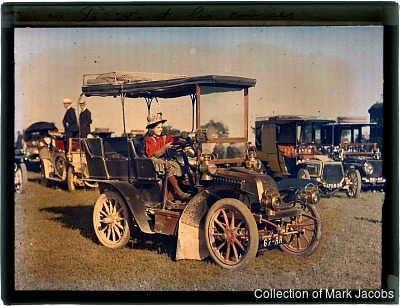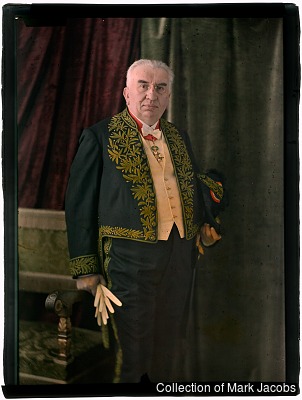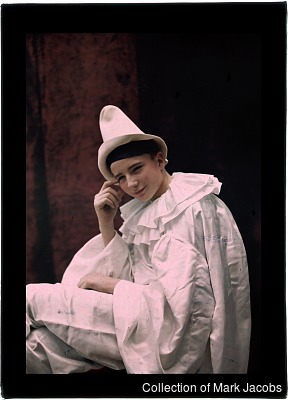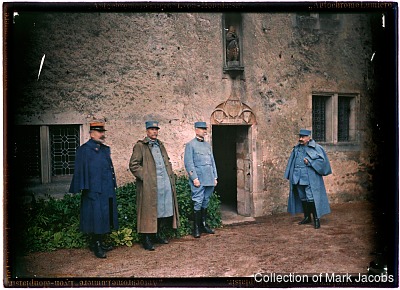
Autochromes by Lumière family
“When the World Turned to Color ” — 20th exhibition of Šechtl & Voseček Museum of Photography.

-
Portrait of Suzanne Lumière, “During the Race”.
Louis Lumière (–)
Autochrome 9 × 12 cm,
Owner of the original autochrome: Collection of Mark Jacobs All rights reserved, use of the digital reproduction is possible only with written permission from the owner of photographThe Autochrome was launched at 1907, so this is still a pre-production shot. It shows Suzanne Lumière sitting behind the steering wheel of her father’s (Louis) 1902 Renault automobile, which was powered by a 2-cylinder, 8-horsepower motor. The Autochrome process paved the way for the practical recording of such family color snapshots, which previously were beyond the reach of all but the most advanced photographers.

-
Louis Lumière in his Science Academician Regalia.
Unknown Photographer
Autochrome 18 × 24 cm,
Owner of the original autochrome: Collection of Mark Jacobs All rights reserved, use of the digital reproduction is possible only with written permission from the owner of photographThe brothers Auguste and Louis Lumière were pioneers in filmmaking and color photography. They patented a color photography process, the Autochrome Lumière (1903), which was launched onto the market in 1907. Louis said “Of all the things I have invented, cinema cost me the least and the work on practical use of Autochromes gave me the greatest pleasure.”

-
Pierot.
Lumière Brothers
Autochrome 13 × 18 cm,
Owner of the original autochrome: Collection of Mark Jacobs All rights reserved, use of the digital reproduction is possible only with written permission from the owner of photographIn his book, Art of the Autochrome, the historian John Wood said this about the Lumières’ own Autochromes: “To our own modern eyes, the Lumières’ plates, with their exactitude and precision, their brightness and crispness, are not only beautiful but striking in their modernity ... whether made consciously as art or as factual documents of their process—staggeringly beautiful and joyful in its celebration of life...”

-
Auguste Lumière in World War I Uniform.
Unknown Photographer (Probably Louis Lumière)
Autochrome 18 × 13 cm,
Owner of the original autochrome: Collection of Mark Jacobs All rights reserved, use of the digital reproduction is possible only with written permission from the owner of photographAuguste Lumière is pictured on the far right along some unidentified French soldiers. By 1914, the production of Autochrome plates surpassed 6,000 per day. However, the First World War caused severe shortages of raw materials and in the autumn of 1914 the Monplaisir factory had to close its doors due to the lack of supplies. Six months into the war, the manufacture of black and white materials would resume because the army needed photographic plates for their operations, but the production of Autochromes never regained its earlier level, and the color factory was never expanded.